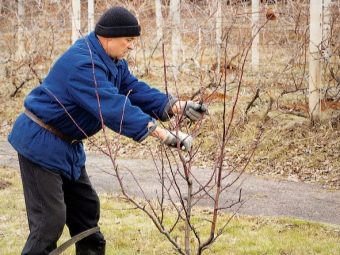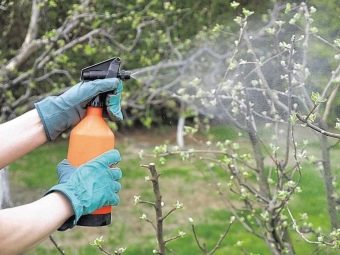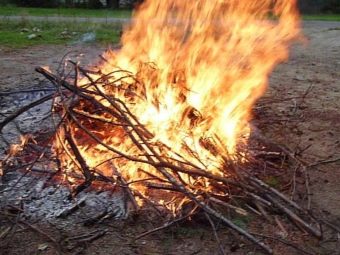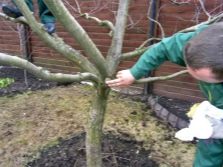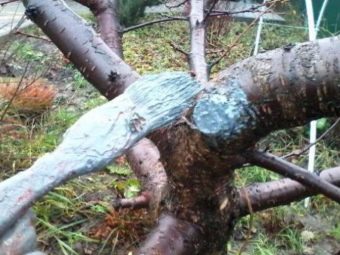How to cut a pear?
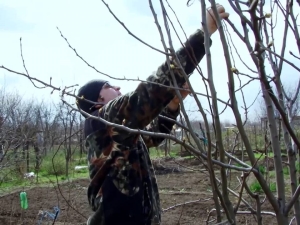
Today, pears are found in gardens as often as the usual apple trees.But in order to get a harvest of fragrant and juicy fruits at the end of the season, it is necessary to properly organize the process of caring for the plant. In addition to traditional watering and fertilizing, attention will have to be paid to timely pruning.
The need for pruning
A pear plant loves light very much, so it is important to control how thick its crown becomes. If timely pruning is carried out, it will be possible not only to contribute to development and fruiting, but also to simplify access during spraying and harvesting. In the case when the procedure is carried out either not timely or not accurately, the crown begins to actively develop. All nutrients are sent to her, and the fruits, in turn, remain deprived. Trimming helps to avoid this. In addition, the timely formation of the crown limits the growth of branches in height. So other plants will be able to get their share of light.
Young trees are processed every autumn season, and from the second year of life - twice a year. The procedure should help speed up their growth and relive the cold without serious consequences. Mature trees usually undergo only autumn processing in the second half of September. The purpose of pruning is to remove the damaged branches, thin out the density of the crown and shorten the extra shoots. If a pear is over 18 years old, then it will be issued once every five years.
Choosing a season
You can cut a pear at any time of the year, it all depends on why it is done. The summer procedure is not mandatory, most often it occurs in emergency cases. For example, a mistake was made in the spring, and now several branches are developing inharmoniously, disturbing others. Usually such an intervention occurs in June, when a pinning is also arranged - plucking the tops of young pears in order to accelerate the ripening of the fruit. After the procedure is completed, the sections are processed with a special solution, which is sold in any store. In parallel, it is possible to carry out such a procedure as cutting young shoots, which allow to transform ordinary leaf buds into those from which the fruits will appear.
Winter pruning has a number of its advantages. At this time, the pear is “asleep”, so the tree will be easier to go through the procedure: wounds will heal faster, and wood will be more pliable. In winter, all activities are held in February, ideally at a temperature of -15 degrees Celsius.
In the spring there is the most significant pruning, which is the guarantor of a good harvest. At this time, buds are born, which naturally require sunlight. If the crown because of its density does not provide it, then the development of flower ovaries, and hence the pear fruits themselves, stops. Pruning begins at the moment when the height of the one-year-old seedling reaches the limits of 50 to 60 centimeters. The temperature should range from 0 to 5 degrees Celsius - usually it happens in March or April.
The top will need to be shortened somewhere by one quarter, as a result of which the lower branches will begin to develop. Neighboring branches are made "on the ring." At the base should be no more than four branches. At this time, you should also save the plant from sick and aged parts. All sections are processed with a special tool or paint. Usually, in spring, work begins when winter frosts cease, and during the day a stable plus is kept. In addition, it is important to do everything before the circulation of the tree sap.
In autumn, the anti-aging crown formation should be carried out with the utmost care. If you overdo it with the cleaned branches, then the tree will simply not cope with the coming winter cold. In September, tree sap is still circulating inside the skeleton of the tree, but if you inflict a lot of wounds on it, substances deposited for the winter will begin to spend money to heal damage. First you have to cut dry and diseased branches, so that they do not have a negative impact on healthy ones.Then remove those parts that grow at a right angle to the trunk.
At the third stage, the elimination of the branches capable of disrupting the fruiting process takes place. The rest is only shortened, and their removal is postponed to the next year. You should not leave big bitches either - it is better to shorten them “by the ring”.
All deleted elements of the pear must be burned.
Process features
In general, experts identify four types of technology used to form pears. Pruning can be formative - it is carried out in the spring months and is very important for a young pear. Then thinning - serves to eliminate interfering elements - shoots and tops. It can be arranged for a tree of any age. Sanitary pruning properly plan in the fall. Within its framework, dried or damaged branches are removed, as well as those that grow incorrectly, for example, deep into the crown. Finally, the trees can be pruned with a rejuvenating purpose. Older specimens will have to remove dried top to the level of healthy wood.
For the procedure, a sharp instrument is used, which must be treated with the purpose of disinfection. The branches are formed "on the ring." This means that the cut is from the outside parallel to the line of the cambial ring - a thickening that indicates the joining of the branch and the trunk. In general, how much a pear will be shortened depends largely on the age of the seedling, and then the full-fledged tree.
If the branch is thick, then half is cut off first, and then another cut is performed. At the second stage, sections should be made from below and above so that the bark does not stretch and the wound heals quickly. When the pear is not in the best condition, it is advised to divide the work into several steps in order not to exhaust it completely.
Cuts will need to be treated with linseed oil, paint based on linseed oil, or as a specialized tool from the store.
How to form a crown?
The essence of the formation of the crown is that on each branch of the skeleton there are only a few branches, where fruits will appear in the future. After planting in spring, the young tree is shortened to a height not exceeding 80 centimeters. It also removes all excess buds and branches. If the seedling already has two years, then one fourth of the entire length is to be cut. In addition, on the trunk should be left only five branches. They must create an acute angle with respect to the trunk and look outward. If the branch looks inwards, it will have to be eliminated - this part of the crown should remain empty. Free space will provide airing and uniform exposure to sunlight, and these two factors, in turn, will contribute to the yield of pears.
Be sure to remove unnecessary tops. It is important to ensure that the main skeleton is located above the second row of buds, and no more than four formations remain on the main branches themselves. It is recommended to strive for the same length of the parts of the tree.
When working with young trees do not be afraid to bend down some of the branches and tie them to the posts. Such a procedure does not harm the tree, but it will simplify the maintenance process, because cutting and spraying the pear will turn out without high ladders.
The crown formation scheme, which needs to be done before the 4th anniversary of the tree, looks like a certain way. The first step is to get rid of those parts that are either sick, or fell victim to pests, or dried up. Then those shoots that grow horizontally from the trunk are removed. Following are eliminated those that interfere with fruiting shoots. Thin shoots are cut at an angle with a secateur, and thick ones near the trunk so that a stump does not appear, in which insects reproduce.
Aftercare
After cutting the pear, all wounds should be treated with a special tool. The main thing is not to do it immediately, but in a day, as the effect on the fresh cut is strictly prohibited.In addition, it is important to control watering - if the soil moisture is below normal, but the tree will recover longer after the procedure. Finally, oxygen should be provided to the roots by loosening the soil and eliminating weeds. After all of the above, it is important to carry out a three-step spraying that will strengthen the pear and allow it to cope with the wintering.
Useful tips
To conduct the procedure for novice gardeners passed without a hitch, you first need to familiarize yourself with some useful information. The pruning shears should have narrow and well-ground knives that will not spoil the bark and disrupt the movement of juices in the pear. Speaking of mature trees, it should be mentioned that thin branches can be pruned at any time of the year, but here the adjustment of thick ones should take place before the movement of juices starts. The trimming procedure for the “elderly” consists of removing the tops and removing vertical branches. Young shoots, directed upward or outward, can be left to rejuvenate the culture.
The branches can be removed by shortening, when their upper parts are cut off to slow the growth of the plant upwards. There is also a thinning technique - all excess shoots at the base are completely eliminated. This procedure improves the ventilation mode, helps transport the sun's rays and strengthens the tree, allowing you to prepare for the cold. In addition, the branches can be tilted and cut vertically.
Although, in principle, the same recommendations are used for cutting pears, for pyramidal pears there is one clarification. The shoots should “turn”, as it were, that is, be shortened by a bud located outside. After that, new branches will develop rejected, which will lead to better lighting of the tree and the formation of more buds of flowers.
It is also possible, instead of cutting, to bend down those branches that grow upwards.
See how to trim a pear in the video below.

